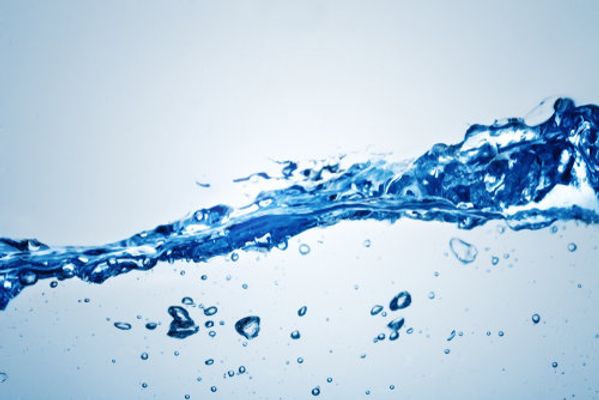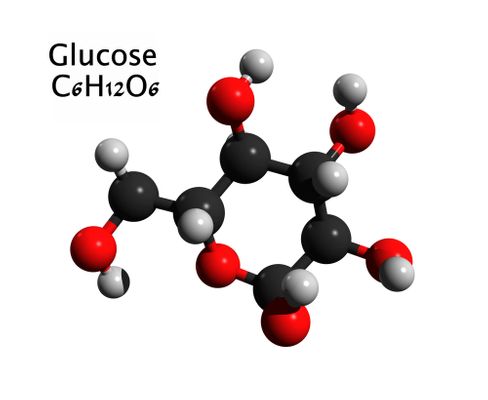2.2.1
Monomers & Polymers
Monomers and Polymers
Monomers and Polymers
There is a huge variety of species on earth. Despite this incredible diversity, all living organisms are made up of similar biological molecules called monomers.


Monomers
Monomers
- Monomers are the single subunits, or building blocks, of life.
- E.g. Amino acids, nucleotides and monosaccharides.


Polymers
Polymers
- Polymers are formed by combining monomers using covalent bonds.
- Polymers are complex molecules.
- E.g. Protein, DNA, starch.
Condensation Reactions
Condensation Reactions
Condensation is the formation of larger, biological molecules (polymers) from smaller molecules (monomers). The byproduct of condensation reactions is water.


Formation
Formation
- Smaller, biological molecules (e.g. sugars) in an organism's cells can form larger, molecules (e.g. carbohydrates) that can be used around the body.
- These biological molecules are important to allow the organism to survive.


Condensation
Condensation
- Condensation is the reaction that forms large, biological molecules.
- The reaction releases water and bonds the smaller components together into larger molecules.


Products of condensation
Products of condensation
- Condensation of amino acids produces proteins.
- Condensation of two monosaccharides produces disaccharides.
- Many disaccharides form polysaccharides.
- Condensation of fatty acids and monoglycerides produces lipids.
Hydrolysis Reactions
Hydrolysis Reactions
Hydrolysis is the break down of large, biological molecules into smaller molecules. The smaller molecules can then be taken up by the cells and used for a number of functions.


Break down
Break down
- When an organism eats, it ingests large, biological molecules (e.g. carbohydrates).
- These biological molecules are important to allow the organism to survive.
- The molecules could be used in the cells for important reactions (e.g respiration) but they are too large to be transported into the cells.
- The large molecules must first be broken down.


Hydrolysis
Hydrolysis
- Hydrolysis is the reaction that breaks down large, biological molecules.
- The reaction requires water and splits larger molecules into their smaller components.
- These smaller molecules (e.g. glucose) can easily diffuse into cells or be transported using protein channels.


Products of hydrolysis
Products of hydrolysis
- Hydrolysis of protein produces amino acids.
- Hydrolysis of carbohydrate produces disaccharides and monosaccharides.
- Disaccharides are two monosaccharides joined together.
- Hydrolysation of lipids produces fatty acids and monoglycerides.
1Cell Structure
1.1Cell Structure
1.1.1Studying Cells - Microscopes
1.1.2Introduction to Eukaryotic & Prokaryotic Cells
1.1.3Ultrastructure of Eukaryotic Cells
1.1.4Ultrastructure of Eukaryotic Cells 2
1.1.5Ultrastructure of Eukaryotic Cells 3
1.1.6Prokaryotic Cells
1.1.7Viruses
1.1.8End of Topic Test - Cell Structure
1.1.9Exam-Style Question - Microscopes
1.1.10A-A* (AO2/3) - Cell Structure
2Biological Molecules
2.1Testing for Biological Modules
2.2Carbohydrates & Lipids
2.3Proteins
3Enzymes
4Cell Membranes & Transport
4.1Biological Membranes
5The Mitotic Cell Cycle
6Nucleic Acids & Protein Synthesis
6.1Nucleic Acids
7Transport in Plants
8Transport in Mammals
8.1Circulatory System
8.2Transport of Oxygen & Carbon Dioxide
9Gas Exchange
9.1Gas Exchange System
10Infectious Diseases
10.1Infectious Diseases
10.2Antibiotics
11Immunity
12Energy & Respiration (A2 Only)
13Photosynthesis (A2 Only)
14Homeostasis (A2 Only)
14.1Homeostasis
14.2The Kidney
14.3Cell Signalling
14.4Blood Glucose Concentration
14.5Homeostasis in Plants
15Control & Coordination (A2 Only)
15.1Control & Coordination in Mammals
15.1.1Neurones
15.1.2Receptors
15.1.3Taste
15.1.4Reflexes
15.1.5Action Potentials
15.1.6Saltatory Conduction
15.1.7Synapses
15.1.8Cholinergic Synnapses
15.1.9Neuromuscular Junction
15.1.10Skeletal Muscle
15.1.11Sliding Filament Theory Contraction
15.1.12Sliding Filament Theory Contraction 2
15.1.13Menstruation
15.1.14Contraceptive Pill
15.2Control & Co-Ordination in Plants
16Inherited Change (A2 Only)
16.1Passage of Information to Offspring
16.2Genes & Phenotype
17Selection & Evolution (A2 Only)
17.2Natural & Artificial Selection
18Classification & Conservation (A2 Only)
18.1Biodiversity
18.2Classification
19Genetic Technology (A2 Only)
19.1Manipulating Genomes
19.2Genetic Technology Applied to Medicine
19.3Genetically Modified Organisms in Agriculture
Jump to other topics
1Cell Structure
1.1Cell Structure
1.1.1Studying Cells - Microscopes
1.1.2Introduction to Eukaryotic & Prokaryotic Cells
1.1.3Ultrastructure of Eukaryotic Cells
1.1.4Ultrastructure of Eukaryotic Cells 2
1.1.5Ultrastructure of Eukaryotic Cells 3
1.1.6Prokaryotic Cells
1.1.7Viruses
1.1.8End of Topic Test - Cell Structure
1.1.9Exam-Style Question - Microscopes
1.1.10A-A* (AO2/3) - Cell Structure
2Biological Molecules
2.1Testing for Biological Modules
2.2Carbohydrates & Lipids
2.3Proteins
3Enzymes
4Cell Membranes & Transport
4.1Biological Membranes
5The Mitotic Cell Cycle
6Nucleic Acids & Protein Synthesis
6.1Nucleic Acids
7Transport in Plants
8Transport in Mammals
8.1Circulatory System
8.2Transport of Oxygen & Carbon Dioxide
9Gas Exchange
9.1Gas Exchange System
10Infectious Diseases
10.1Infectious Diseases
10.2Antibiotics
11Immunity
12Energy & Respiration (A2 Only)
13Photosynthesis (A2 Only)
14Homeostasis (A2 Only)
14.1Homeostasis
14.2The Kidney
14.3Cell Signalling
14.4Blood Glucose Concentration
14.5Homeostasis in Plants
15Control & Coordination (A2 Only)
15.1Control & Coordination in Mammals
15.1.1Neurones
15.1.2Receptors
15.1.3Taste
15.1.4Reflexes
15.1.5Action Potentials
15.1.6Saltatory Conduction
15.1.7Synapses
15.1.8Cholinergic Synnapses
15.1.9Neuromuscular Junction
15.1.10Skeletal Muscle
15.1.11Sliding Filament Theory Contraction
15.1.12Sliding Filament Theory Contraction 2
15.1.13Menstruation
15.1.14Contraceptive Pill
15.2Control & Co-Ordination in Plants
16Inherited Change (A2 Only)
16.1Passage of Information to Offspring
16.2Genes & Phenotype
17Selection & Evolution (A2 Only)
17.2Natural & Artificial Selection
18Classification & Conservation (A2 Only)
18.1Biodiversity
18.2Classification
19Genetic Technology (A2 Only)
19.1Manipulating Genomes
19.2Genetic Technology Applied to Medicine
19.3Genetically Modified Organisms in Agriculture
Unlock your full potential with Seneca Premium
Unlimited access to 10,000+ open-ended exam questions
Mini-mock exams based on your study history
Unlock 800+ premium courses & e-books